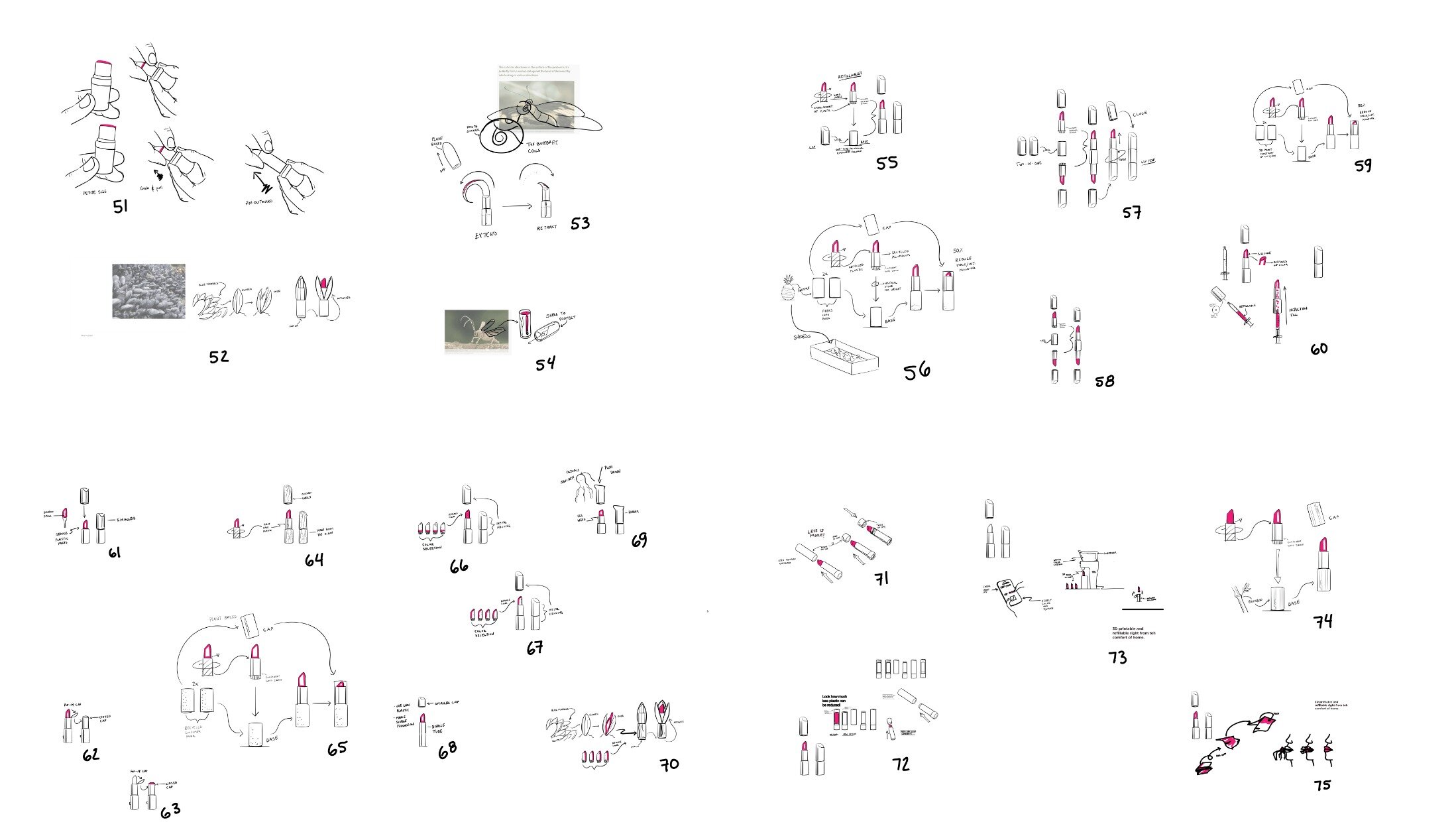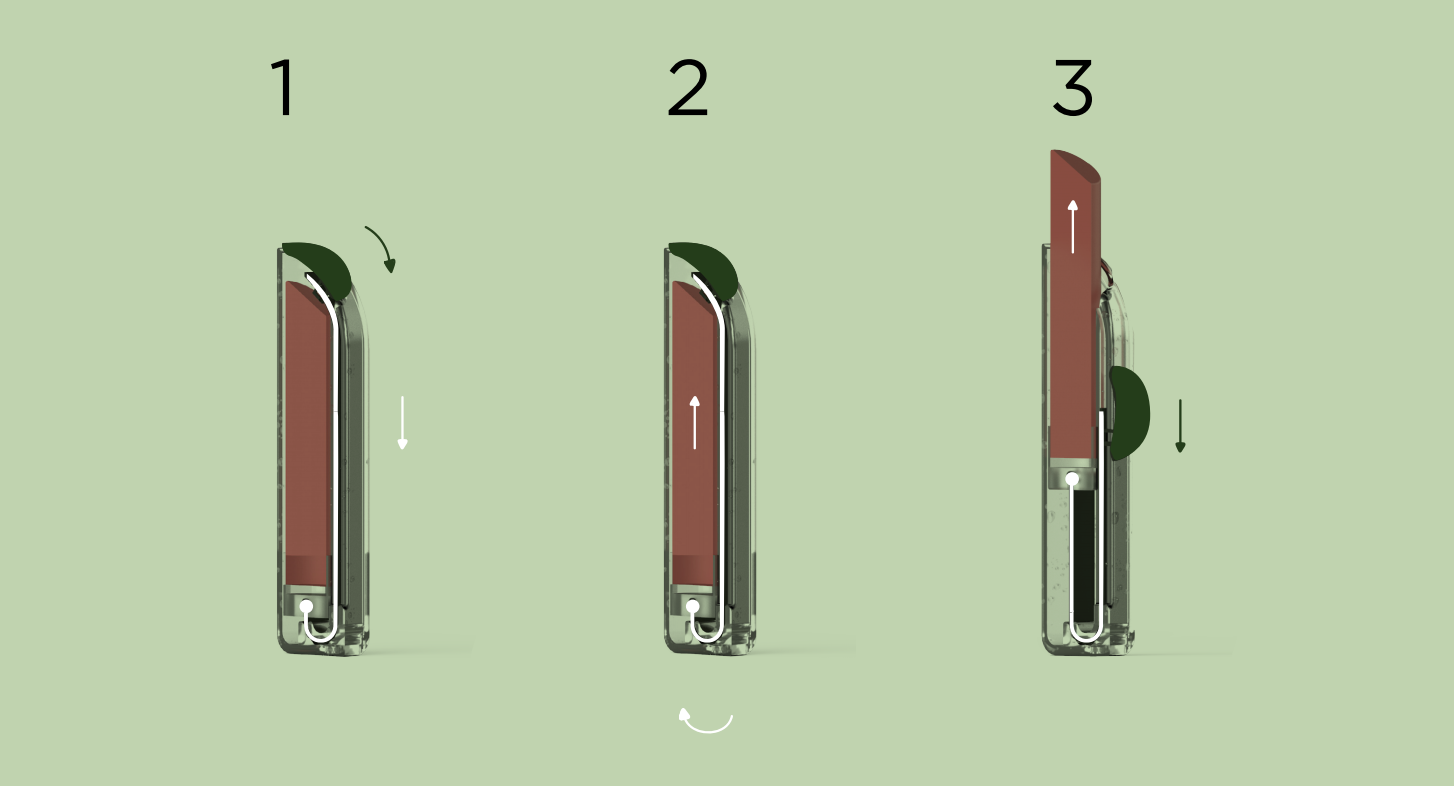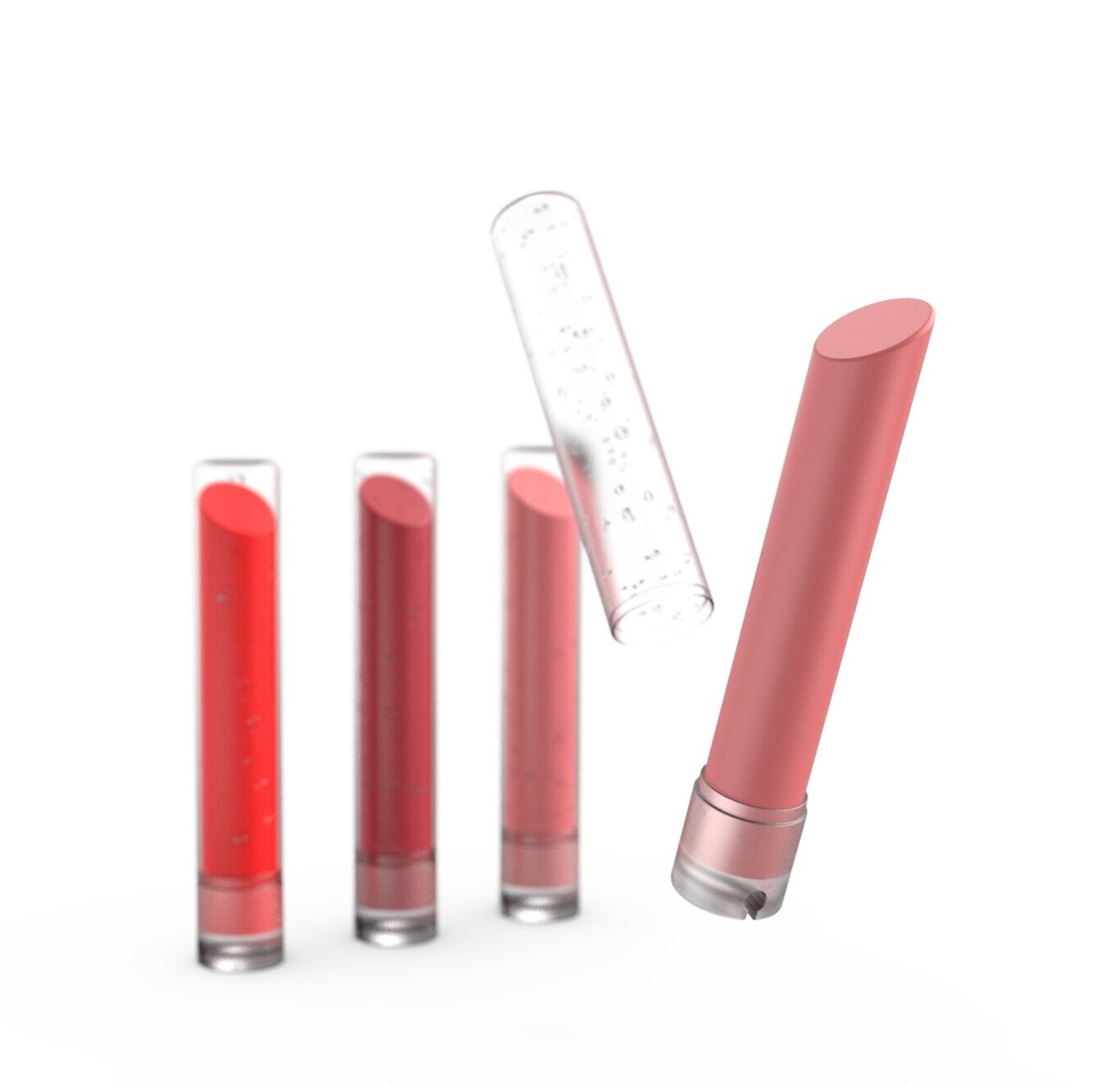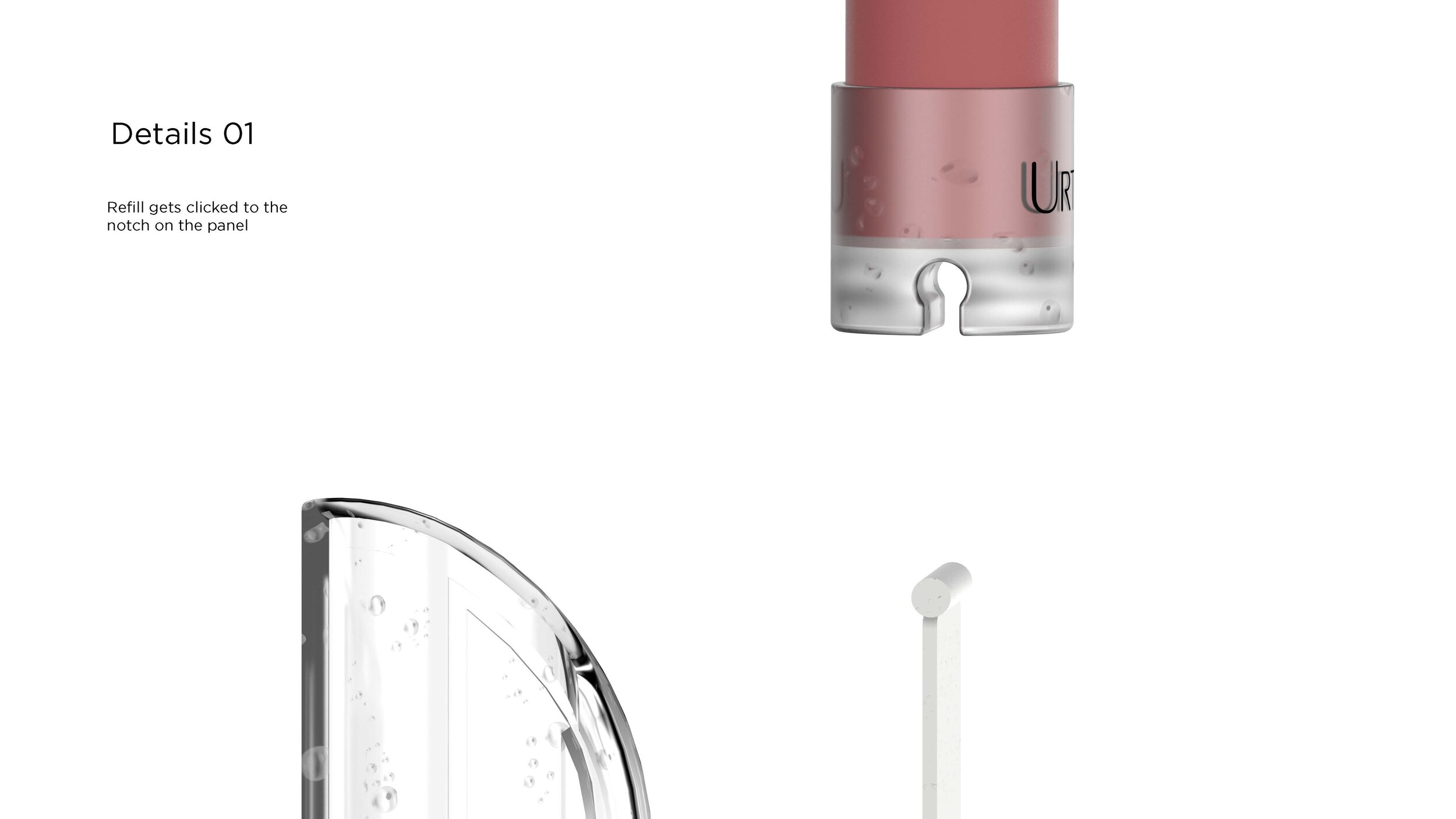
Urth: Biodegradable Lipstick
Algae based lipstick collection for your sustainable beauty life
Project Brief
Design a Package for a CPG product to reduce its impact to the environment
Project
Urth is a student project for product design 6: Packaging and circularity. It is a 14 week project/
Disciplines
Design for sustainability/ Packaging Design/ Life Cycle Assessment
Team
Andi Li, Esther Kim, Ozzy Alvarez
Contributed to the topic decision research, material research, product mechanism and product development process.
Awards
Student Notable, Packaging Award, Core77 Design Award 2021 Student Notable, Strategy& Research Award, Core77 Design Award 2021

We see the problem: Cosmetic Waste
“In 2018, in the U.S. alone, almost 7.9 billion units of rigid plastic were created just for beauty and personal care products, according to Euromonitor International.”
Project Statement
For this project, we are redesigning a package for a CPG product to reduce its negative impact on the planet. We found a gap in sustainability for the cosmetic industry. Due to the needs of looking luxury, cosmetic products tend to be overpackaged.
We are re-designing an existing lipstick to make it more sustainable through reducing materials, replacing plastics with bioplastic (algae), extending the product life, and altering user behaviors.

How we choose our bench mark product…
L’Oréal
To decide our brand, we studied brands from different price levels and their sustainability acts.
We chose L’Oréal as our brand because of its variation of products and services, as well as its
cost-effectiveness that keeps a broader user group.
Why Lipstick
Lipstick is a tiny size product people constantly buy, and it’s impossible for recycling. It has a great market size, and the market is still growing. Also, L’Oréal is one of the leading lipstick brands in the United States, as the color riche collection has a 8.3% dollar sales..
L’Oréal’s Color Riche Collection
L’Oréal offers 19 different lip products and 13 different lipsticks. We chose the Color Riche Collection to study its LCA due to its traditional look, and variation of components that give us more opportunities to study and redesign. Also, it’s one of the top seller in the U.S.

Life Cycle Assessment
To the dissect and study the product, and learn about its impact to the environment in order to find the opportunities for redesign.
To better understand our research and study, we had to deconstruct the lipstick. This gave us an opportunity to visually see that ONE single L’Oréal lipstick from the riche collection has 7 different commingled materials and the lipstick itself is too small to be recycled. Wendy Ye-letchka, one of our audience guests, and author of ‘Packaging Sustainability’ book writes (quote) “The most sustainable packaging is no packaging.” How can we take this idea and explore sustainable packaging?
Process Tree
Below is a picture of Life Cycle Assessment (LCA) we have done for a L’Oréal Color Riche Collection Lipstick. The LCA starts from the Extraction, all the way to packaging and its end of life. By seeing the big picture, we were able to identify 3 main hotspots: Extraction, Excessive Parts and End of Life


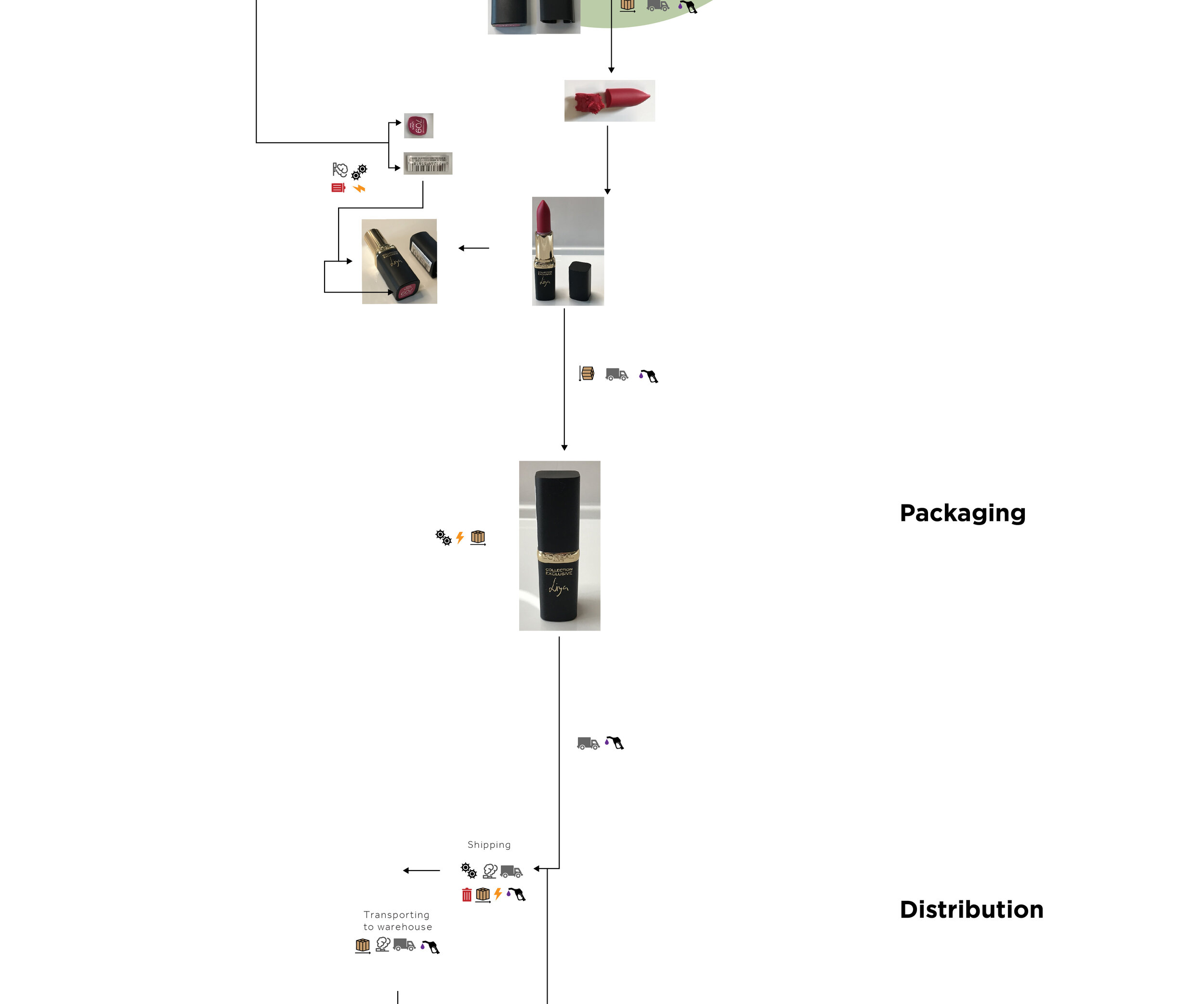

Okala Score
After identifying our 3 hot spots, we also looked back at the deconstruction of all of the materials that go into making the lipstick and used the Okala Impact Assessment to identify high target scores.
So, what is an Okala score? The Okala score gives us a single digit score. First we individually weigh all the parts we took apart, multiplying them by the (Okala Factor points, per pound or Impact). Then we sum up the total impact scores and then divide the total score by the estimated lipstick lifetime hours in 6 months. The research results led us to understand that one single L’Oréal lipstick has an impact score of 0.27 per unit or to better understand, it contributes to 28.4 pounds of CO2.
The toxicity from the lipstick are mostly from the color pigments.
Ingredients of Lipstick
Goals and Strategies
Better End of Life
Changing the material of the product to reduce the impacts from extractions.
Guide for Consumer Behavior
Make the lipstick case refillable to extend the packaging life.
Biophilic
Use the active ingredients from nature to make the product cleaner and healthier
Concept Ideation
Selected Concept

Material: How we meet with ALGAE…
During the class, we were introduced to the material: Algae. It is a sustainably produced material, and it can be made into a large variation of product. Luckily, we find that it not only can be used to make sustainable packages for lipsticks, but also can be used as an active ingredients for the balm section.

"The pictures show some of the steps to scale up microalgae production, from lab scale to large-scale". -Luca Bonanomi

The bio-manufacturing of algae is scalable, productive, sustainable and programmable.

For algae plastic, Algae can be made to polyester and PHB which are both biodegradable and recyclable. Instead of petroleum, the plastic is using oil extracted from algae. Algae polyester can be biodegraded in 3-6 months depends on the moisture and heat in the trash, and it turns to dust at its end of life.

Pigments can be extracted from microalgae. Though the colors may fade more quickly compare to industrial made pigments, shelf life can still be meet about 12 months.

The chemicals in algae can provide a UV shield for our skin. Also, it is a natural moisturizer.
Algae Pigment Experiment
Luca helped us to do 2 sets of experiments about the algae application in lipstick balm. In the experiments, we have the pigments extracted from micro-algae and the pigments mixed with an organic lip balm to achieve a form and function of a lipstick.

Frozen Porphyridium Purpureum wrapped in bandage gauze

Ethanol works as an organic solvent that dissolves pigments From time to time little pressure applied on the sample to facilitate pigments extraction

Dry the Pigments
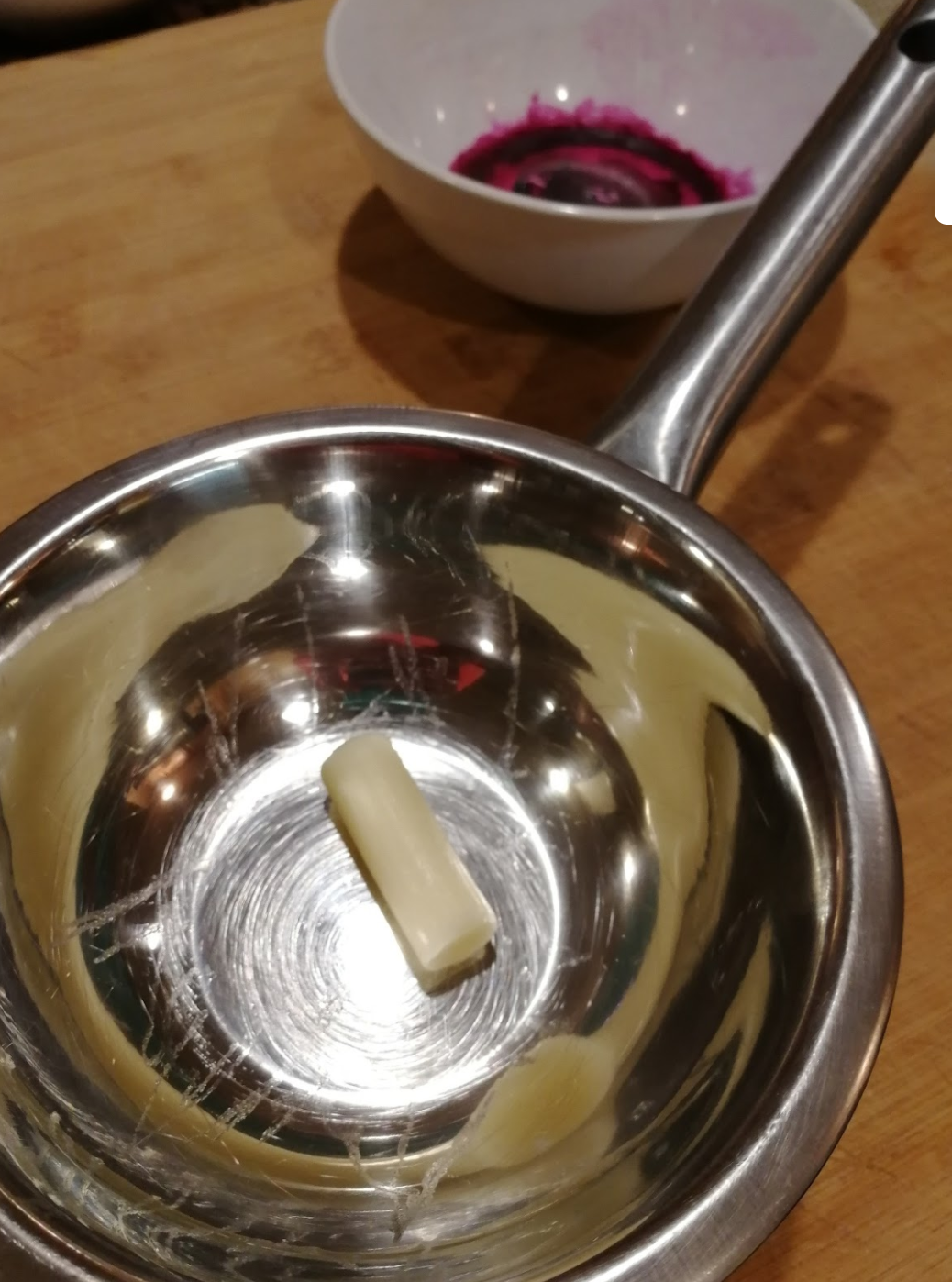
Melt a Lip balm

Mix the balm with pigments

Let the lipstick set

Test the color on hands

User and Trends for 2025
Due to the nature of proof of concept development stages of Algae parts and testing lipstick pigments, we’ve proposed to have our first user for 2025.

For Gen Alpha with their interest in sustainability, Urth was designed to leave a positive impact on consumer behaviors.



Color Choices
From the CMF research we’ve done for Gen Alpha we tuned our colors and got these four variations : Midnight sky, prosperity pink, samurai power, and healthy winter.
How it works?
So how does it work? We were inspired by the conveyor belt and sliding door. We can easily find these from the airports and our homes. The cap and the panel are connected which allows them to move along together.
Push the cap down
when you push it down, the panel gets pushed down as well which will force the lipstick part go up
Lipstick comes out when the cap is pushed down and lipstick goes back in when the cap is up.
Refill System
Urth created a refill system and this minimal refill case allows you to store unfinished lipstick back in the (algae made) packaging. Whether you want to keep the lipstick inside the case until you use it all or you can swap around different colors.
You can also purchase more than one lipstick case and have multiple colors ready to use at any time and anywhere. More colors are available online and labels are attached on the side to seal the new products.

Detail and Techpack

Consumer Experience
With expected growth in online shopping, Urth will be launched in 2025 exclusively on online












